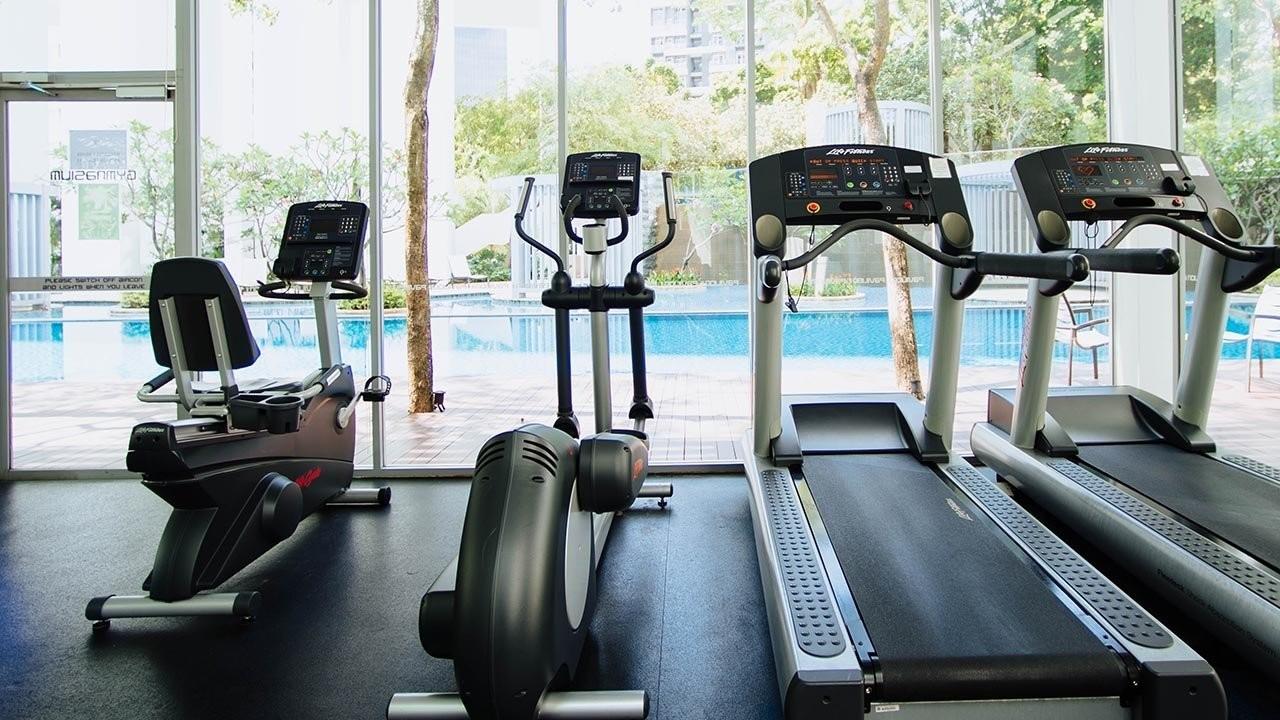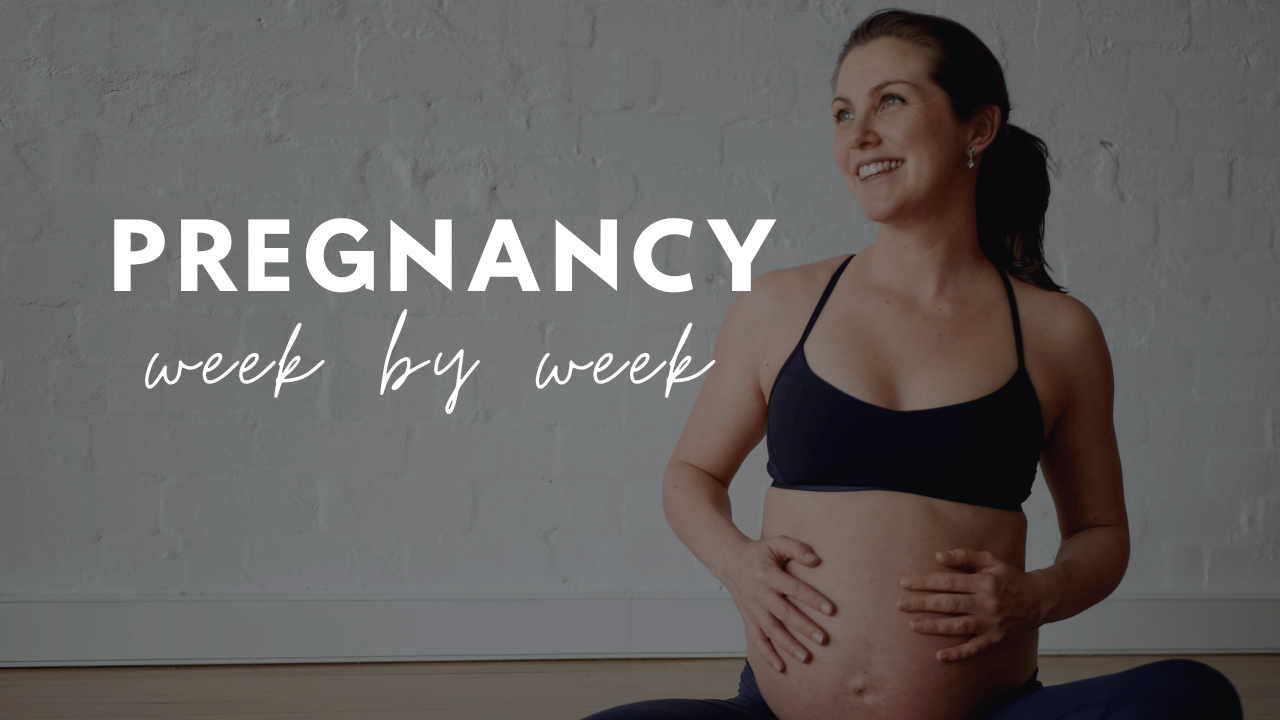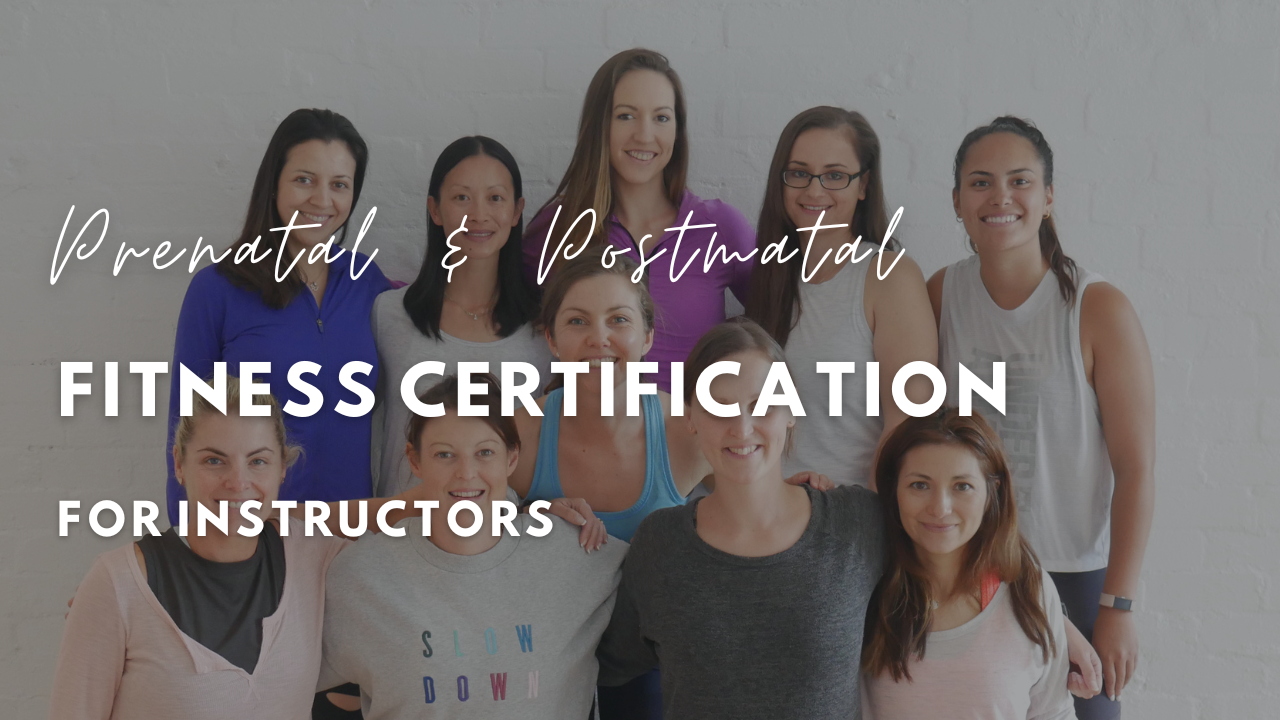Can I Use a Treadmill when Pregnant?

Can I Use a Treadmill when Pregnant?
Yes, but here is what you must know to keep you and baby safe. It all starts with understanding what you must avoid.
Are you wondering if it's safe to use a treadmill during pregnancy? In this informative post, we delve into the topic of exercising while pregnant, specifically focusing on treadmill workouts.
We'll discuss the benefits of staying active, expert advice, and safety tips to ensure you and your baby remain healthy throughout your pregnancy journey.
Let's Answer your Questions
We also cover common concerns and frequently asked questions about exercising in each trimester. Join us to find out if you can safely incorporate treadmill sessions into your prenatal fitness routine!
Don't forget to visit my PregActive Pregnancy YouTube channel for more insightful content tailored for expecting moms!
This includes being able to identify the signs when you need to stop running or walking, what speed you can run at when pregnant, for how long and at what intensity.
Home Gym Equipment
With many of us experiencing lockdown, there has been a surge in people buying home gym equipment including treadmills. So this is a good time to chat about your safety when using a treadmill at home.
As with any prenatal exercise, your goal is to help you improve your overall health, fitness and well-being while participating in a safe workout.
Just follow the precautions and guidelines for staying safe while participating in your prenatal cardio workouts.
Pregnant?
As expectant mothers, staying active during pregnancy is crucial for our overall health and wellbeing. Regular exercise can help reduce the risk of gestational diabetes, alleviate back pain, and even prepare our bodies for childbirth.
One popular way to stay active is by running on a treadmill. But is it safe to do so while pregnant?
Is Running Safe?
Many women wonder if it's okay to continue running on a treadmill during pregnancy, or if it's better to take a break. Some may think that running will cause miscarriage or preterm labor, or that it will put too much stress on their joints.
But the truth is, exercising during pregnancy is not only safe, but beneficial, as long as you're cleared by your healthcare provider and take necessary precautions.
For me personally, I prefer walking as it is low-impact.
Running on a Treadmill
In fact, running on a treadmill can be a great way to maintain cardiovascular fitness and strength during pregnancy. However, it's essential to listen to your body and make adjustments as needed.
For example, you may need to slow down your pace, reduce the incline, or incorporate more rest breaks into your workout.
It's also important to remember that every pregnancy is unique, and what works for one woman may not work for another.
That's why it's crucial to consult with your healthcare provider before starting or continuing any exercise routine during pregnancy.
Benefits of Using a Treadmill
One of the biggest benefits of treadmill workouts during pregnancy is that they can help improve mental health. Exercise has been shown to reduce symptoms of anxiety and depression, which are common during pregnancy.
Plus, a healthy dose of endorphins can do wonders for your mood and energy levels.
Prepare Your Body for Childbirth
Additionally, treadmill workouts can help prepare your body for childbirth by strengthening your core and improving your overall physical fitness.
And, let's be real, having a healthy and strong body during pregnancy can make a huge difference in your overall comfort and wellbeing.
I want to share a personal tip that has helped me during my pregnancy journey.
I started incorporating short, 10-minute treadmill walking sessions into my daily routine, and it's made a huge difference in my energy levels and mood.
Plus, it's a great way to squeeze in some self-care and me-time.
Don’t Push it!
Remember, the key to safely running on a treadmill during pregnancy is to listen to your body and take it slow. Don't push yourself too hard, and be mindful of any discomfort or pain.
And always, always consult with your healthcare provider before starting or continuing any exercise routine.
Before we wrap up, I want to recap the main points we discussed today.
Running or walking on a treadmill during pregnancy can be safe and beneficial when done correctly, with the clearance of your healthcare provider, and with necessary precautions.
It's essential to listen to your body, make adjustments as needed, and prioritize your health and wellbeing above all.
Can I Use a Treadmill when Pregnant?
Yes, exercising on a treadmill during pregnancy is generally safe as long as you adhere to the important cautions to keep you safe as I have outlined below.
Ideally, you should try and get outside to walk so you get some fresh air. But often during extreme conditions during winter or summer you are better off working out at home and a treadmill can come in handy.
Any Medical Conditions?
Barring medical conditions that prevent you from exercising when pregnant, you can and should, maintain a prenatal fitness routine. The benefits are endless.
So, get approval from your health care professional and if you want to workout on the treadmill then let's get started in providing you with all the facts you need to know to ensure your safety.
ACOG
The American College of Obstetricians and Gynecologists (ACOG) recommends that pregnant women avoid contact sports and activities that pose a risk of falling or injuring the abdomen.
So the treadmill does pose the issue of you losing your balance and falling.
No matter how fit you are, get the OK from your doctor before embarking on a fitness program during pregnancy.
And remember to include some of my pregnancy exercise classes into your weekly workout program.
What speed should I walk on treadmill pregnant?
You can walk on a treadmill at the same pace as you did before pregnancy unless you have health complications or are into your third trimester. Walking at safe, constant speed is ideal as long as you can safely maintain your balance.
One of the best ways to know if you are walking at a safe speed is to use the 'talk test.' If you can carry on a conversation as you walk then the speed is OK.
If You are Out of Breath
If you are out of breath and find it difficult to talk then maybe you need to lower the speed.
Remember, you know have a very important passenger on board with you as you exercise so your goals now are exercising for health, not for setting any new personal bests.
If the 'talk test' isn't for you, use the rate of perceived exertion (RPE). This is where you rate different levels of exertion on a scale to keep yourself on track.
If you have a scale from one to 20 with 20 being the most intense and one being nothing at all, you want to be between 12 to 14.
Should I Walk or Run?
Walking is a better option when pregnant. But if you were running before pregnancy then you can continue to run during pregnancy.
For me, I prefer walking as it is a lower-impact form of exercises and I can ensure I have more balance on the treadmill as compared to running
If running doesn't feel right for you then maybe it's time for you to walk instead. You need to listen to your body and if your pace starts to feel like it's too much, then lower the intensity to something more comfortable for your body.
As you enter your third trimester I recommend that you focus more on walking on the treadmill. Your growing belly starts to get in the way and your balance is not as good.
Can you walk too much during pregnancy?
Yes, you can walk too much during pregnancy just as you can exercise too much with any form of exercise.
The question is then: How much exercise is too much?
If your body is starting to get a lot of body aches, pains or soreness then you need to avoid the high-impact exercises. You also want to avoid raising your body temperature too high which is more likely to happen if you are running.
How long you walk and at what speed will likely be dependent on your current fitness level and how much you exercised before pregnancy.
Start with a walking distance that you are comfortable with and a speed that you feel you are able to maintain. Then, if you need to, you can slowly increase the distance and speed.
When to Avoid a Treadmill Workout
Pregnant women should be able to do most of the same exercises they did before getting pregnant. Walking, swimming, and riding a stationary bike are all safe choices.
According to ACOG, women who should skip exercise entirely while pregnant are those with conditions such as heart or lung disease, a weakened cervix, high blood pressure (preeclampsia), problems with the placenta, bleeding, or those who are at risk for early labor.
Benefits of a Treadmill Workout
Walking or running on a treadmill while you are pregnant can greatly benefit you and your growing baby.
Exercising helps you to maintain a healthy body weight, assist in carrying around a growing baby with less fatigue as well as getting your body physically ready for childbirth.
Exercise can also help prevent many unwanted pregnancy-related complications like gestational diabetes, which can impact the health of you and your child.
And another benefits is that walking on a treadmill can help reduce swelling. This is because moving around can help reduce the fluid buildup in your legs, ankles and feet that come with pregnancy.
Can Walking on a Treadmill Induce Labor?
Walking is the most natural form of exercise for us which is why it is recommended throughout your pregnancy. A common question that arises is whether or not a brisk walk can induce labor.
Walking can cause some pressure on the cervix, which can help place the baby in a better position, thus speeding up the process.
Treadmill Workout Tips
1. Don't exceed your current fitness level.
A good way to start exercising in pregnancy is to workout at a slightly lower intensity, speed and duration and see how you feel. Use your pre-pregnancy fitness levels to gauge your new prenatal exercise plan.
2. Maintain Your balance at all times
When walking or running on the treadmill the greatest risk to you is falling. So you should hold onto the railings or at least be ready to hold on to them.
The combination of the front-loading baby weight and the incline could lead to imbalances while walking or running.
The incline is fine as long as you hold on to the railings of the treadmill. The side railings are meant to help keep you stead; if you are hanging on for dear life, it's time to lower the incline and speed to safer levels.
The American College of Obstetricians and Gynecologists states that any activity that runs a high risk of falling or abdominal trauma should be avoided.
This includes sports like horse riding, skiing or bike riding on the road. Using a treadmill doesn't quite fall into this category if you use it safely.
3. Stay well-hydrated
When you are well-hydrate throughout your workout you can avoid overheating. It's important to keep your body temperature cool during pregnancy, and having a water bottle with you on the treadmill helps accomplish this goal.
Dehydration is a cause of premature labor, so make sure to keep drinking while you're on the treadmill.
4. Conduct safe pregnancy stretches
You can include some recommended pregnancy stretches after your warm up and again after your cool down. When pregnant, your system produces a hormone called relaxin.
Relaxin plays the role in preparing you body for birth by loosening some of your muscles, ligaments and joints. As a result, this can make it easy to over-stretch, so be aware of your limits.
Ready for Your Treadmill Workout?
Here is a 30 minute workout you use if you have a good base fitness level. I want you to reduce the speed or incline if you are not comfortable on the treadmill or did not exercise a lot before pregnancy.
Please modify this workout to suit your fitness and comfort level.
Warm up:
Time: 5 Minutes
Speed: 2 -3 mph (4-5 km / hour)
Incline: 1%. You can skip the incline if just starting out on a treadmill.
Stage 1
Time: 5 minutes
Speed: Increase speed by 1 mph (1.6 km)
Incline: Increase incline by 2 - 3%
Stage 2
Time: 5 minutes
Speed: Increase speed by 1 mph (1.6 km) - only if comfortable to you.
Incline: same
Stage 3
Time: 3 minutes
Speed: Reduce speed back to 2 - 3 mph (4-5 km / hour)
Incline: Increase incline by 2%
Stage 4
Time: 2 minutes
Speed: 2 -3 mph (4-5 km / hour)
Incline: Decrease incline by 2%
Stage 5
Time: 3 minutes
Speed: 2 -3 mph (4-5 km / hour)
Incline: Increase incline by 3%
Stage 6
Time: 2 minutes
Speed: 2 -3 mph (4-5 km / hour)
Incline: Decrease incline by 2%
Warm down
Time: 5 minutes
Speed: Decrease speed to a slow walking speed
Incline: Decrease incline to 0%
When to Stop Your Treadmill Workouts
I want you to stop working out if you experience any of the following symptoms.
1. Exhaustion
2. Headache
3. Weak muscles
4. Chest pain
5. Irregular heartbeat/palpitations
6. Tightening in the tummy/cramping
7. Water breaking
8. Difficulty breathing
9. Dizziness
10. Vaginal bleeding
11. Pain around the tummy
13. Trouble standing
14. Pain or swelling in the legs
Treadmills when Pregnant
In conclusion, exercising while being pregnant can not only benefit your health but also your baby. Walking or running on a treadmill when pregnant can be a good option if you cannot get outside.
The most important point is to exercise at a rate suitable for your fitness level and to maintain your balance at all times. Make sure you know the signs for when you need to stop your workout.






